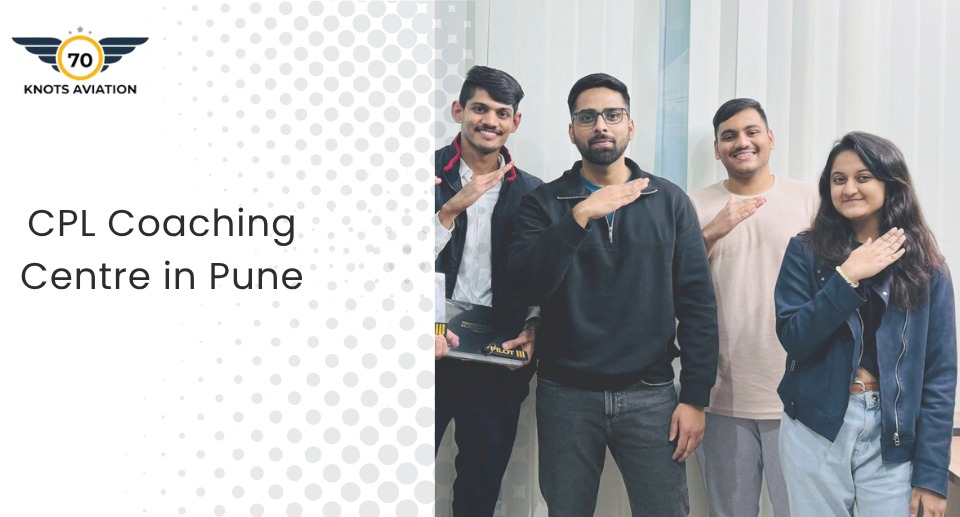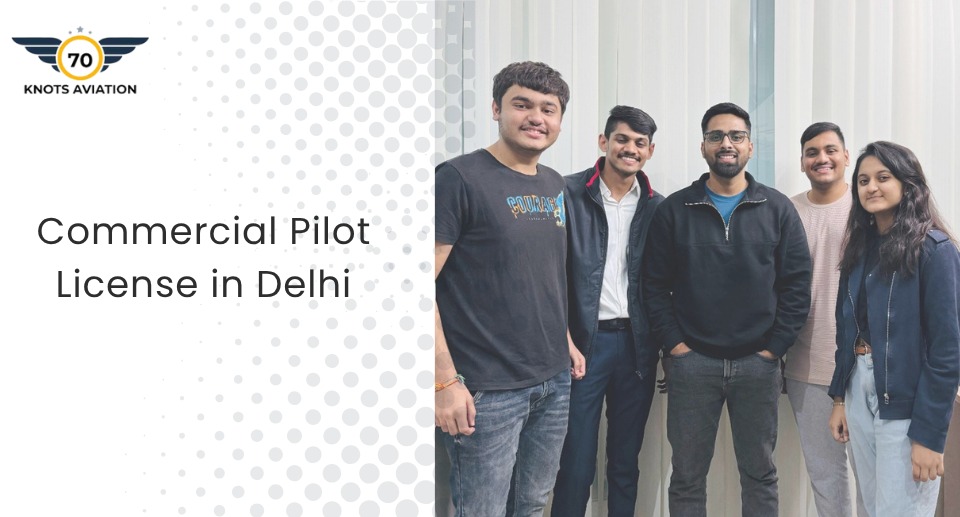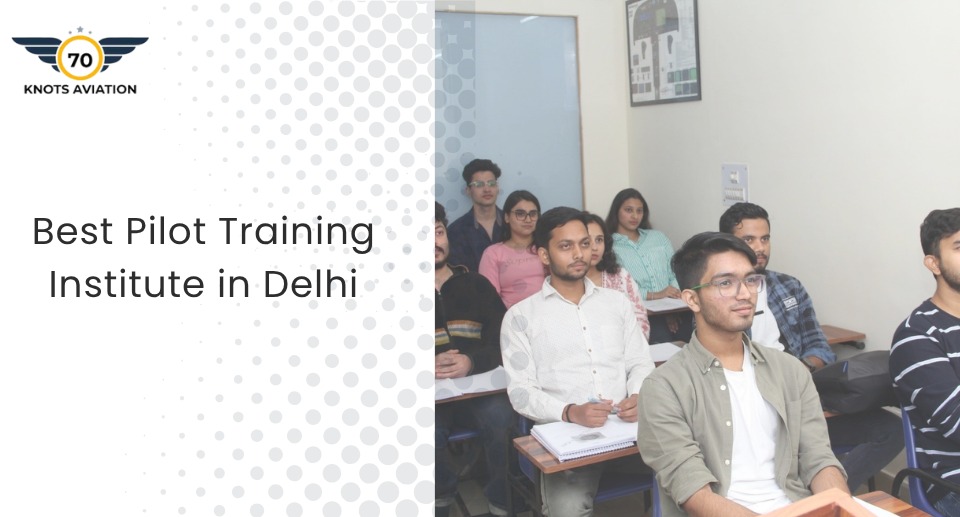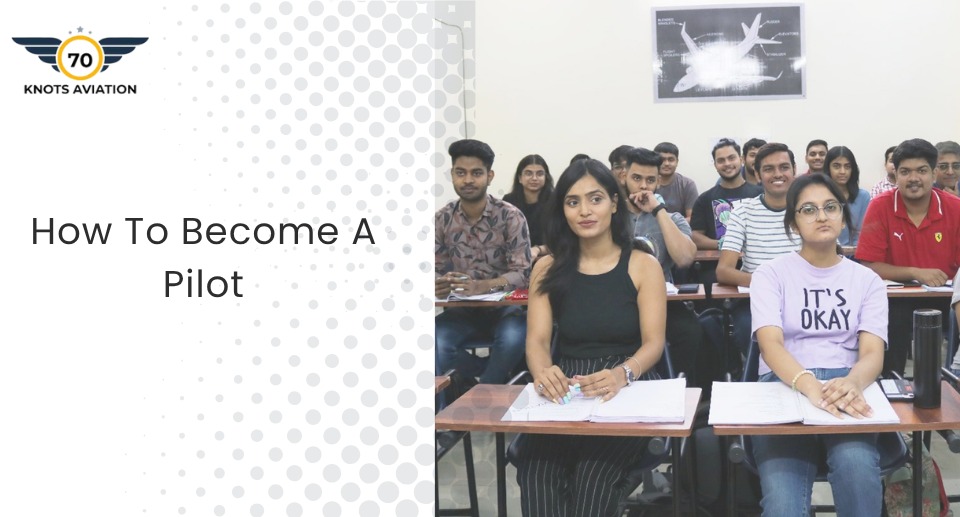Job Opportunities After Completing a Pilot Course

The roar of jet engines, the thrill of takeoff, the unmatched view from the cockpit – if these images quicken your pulse, you’re meant for an aviation career. The aviation industry in India is taking off, with airlines bringing in 100+ new aircraft every year, as the UDAN program by the government is offering job opportunities across regional connectivity services.
At 70 Knots Aviation, you can choose world-class pilot training programs that are designed to help you achieve your aviation aspirations. With expert instructors, modern facilities, and training programs approved by the DGCA, we will make sure you are industry-ready from the time you choose to train with us.
In this guide, we will discuss the career options after finishing a pilot course in India, the licenses you need to function in those different capacities, and how to maximize your opportunities in these ever-expanding industry jobs.
Types of Pilot Licenses and Their Career Paths
Let’s venture through the different types of pilot licenses and the career roadmaps they lead to:
-
Private Pilot License (PPL)
The Private Pilot License permits you to fly for pleasure, but not for hire. While it does not lead to paid flying opportunities, it is an excellent first step for those who want to fly planes as a hobby before pursuing a career in aviation.
Career Prospects:
- Recreational flying
- Flying club memberships
- Foundation for advanced licenses
-
Commercial Pilot License (CPL)
A Commercial Pilot License is mandatory if you want to get paid for flying. This license opens doors to entry-level aviation jobs in India.
Career Prospects:
- Flight instructor roles
- Charter and corporate flying
- Regional airline co-pilot positions
At 70 Knots Aviation, our CPL program includes rigorous flight training and ground classes to prepare you for DGCA exams and real-world flying scenarios.
-
Airline Transport Pilot License (ATPL)
The ATPL is the top tier of pilot licensure. To become a captain for a commercial airline, it is mandatory for you to possess an Airline Transport Pilot License. You don’t need to complete it immediately; most pilots earn it while working.
Career Prospects:
- Captain at major airlines (IndiGo, Air India, Vistara)
- Long-haul international flights
- Senior leadership roles in aviation
Prospective Aviation Jobs After Pilot Training
Once you have finished your Commercial Pilot License (CPL), you will be in a position to start several exhilarating entry-level jobs. Although many pilots today have aspirations to fly for the big airlines, these routes are extremely important to build flight hours and gain experience.
-
Flight Instructor
Becoming a flight instructor is a common career choice in India for new CPL holders. Most pilots will stay at this position for 1-3 years and a flight instructor can expect to earn between ₹30,000 to ₹60,000 per month, all whilst attaining important flight time experience.
- It provides a structured way to accumulate flight hours, with most instructors logging 50-100 hours per month
- You earn while you learn, unlike paying for additional training
- Airlines highly value teaching experience as it demonstrates communication and leadership skills
The salary range varies based on:
- Location (Metro flying schools pay 20-30% more)
- Aircraft type (Instructors on advanced trainers earn more)
- Additional ratings (Instrument/MEIR instructors command premium pay)
-
Charter & Corporate Pilot
For CPL holders seeking an exciting alternative to traditional airline paths, becoming a charter or corporate pilot offers excellent prospects. Most professionals spend 1-5 years in this sector, earning an average salary of ₹5-10 LPA, with significant potential for faster career growth compared to regional airline roles.
- Higher starting salaries than most entry-level aviation positions.
- Exposure to advanced business jets like Cessna Citations and Gulfstreams early in one’s career.
- More flexible schedules compared to the rigid rosters of commercial airlines.
The career trajectory in this field often leads to:
- International corporate flying opportunities after 3-5 years.
- Transition to major airlines with valuable jet experience.
- Management roles in flight operations for those who prefer stability.
-
Cargo Pilot
The cargo aviation sector offers CPL holders a dynamic career alternative, with professionals typically spending 2+ years in the field while earning ₹6-12 LPA. This segment has shown remarkable growth, especially with India’s e-commerce boom.
- Faster command opportunities compared to passenger airlines.
- Premium pay for night flying experience.
- Less passenger-related stress and more operational focus.
Career advancement typically follows:
- First 2 years of building turbine experience on freighters.
- Years 3-5 dedicated to transitioning to wide-body cargo ops.
- Year 6th for international cargo opportunities.
-
Regional Airlines (First Officer)
A First Officer position at regional airlines serves as the most reliable pathway for CPL holders aspiring to join major Indian carriers. Pilots typically spend 2-4 years in this role, earning an average salary of ₹4-8 LPA, while accumulating the crucial experience airlines demand.
- Direct exposure to scheduled airline operations from day one
- Systematic hour-building through regular flight rotations
- Early familiarity with standard operating procedures (SOPs) used across the industry
What makes this route particularly valuable:
- Guaranteed takeoffs/landings (unlike unpredictable charter ops)
- Multi-crew environment that airlines prioritize
- Established career ladder with clear upgrade paths
70 Knots Aviation supports regional airline aspirants through airline preparation programs, interview coaching with former airline captains, and recruitment connections with regional carriers.
5. Agricultural & Survey Pilot
For pilots seeking unconventional yet rewarding career paths, agricultural and aerial survey flying offers distinctive opportunities. Professionals typically spend 1-3 years in this sector, earning an average salary of ₹4-7 LPA while developing specialized flight skills rarely gained in conventional aviation roles.
- Hands-on experience with low-altitude flying techniques
- Diverse operational environments from farmlands to remote terrains
- Critical contribution to India’s agricultural and infrastructure sectors
Career Progression Typically Involves:
- First Year: Mastering precision spraying/aerial photography
- Years 2-3: Transitioning to more complex survey missions
- Beyond: Moving into offshore operations or specialized disaster response
Conclusion
A career as a pilot in India is both rewarding and full of opportunities. Whether you want to fly commercial airliners, private jets, or helicopters, the right training and persistence can help you soar to new heights.
At 70 Knots Aviation, we are committed to shaping the next generation of skilled pilots. Our DGCA-approved courses, experienced instructors, and hands-on training ensure you’re ready for a successful aviation career.






